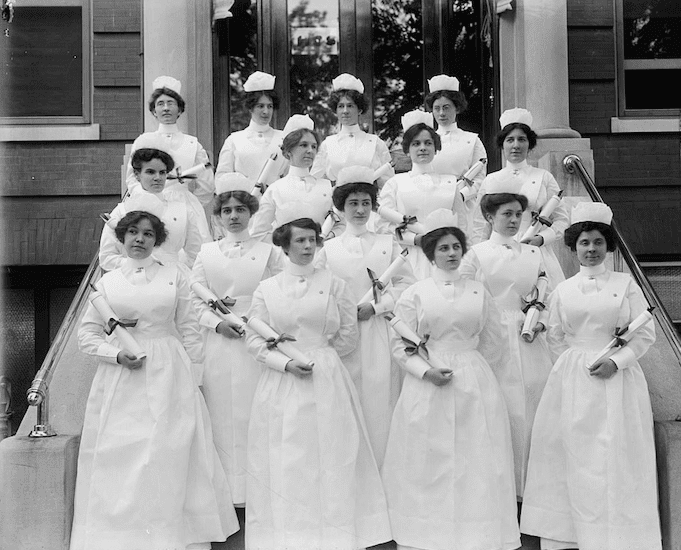The Life of Georgetown From 1620 to 2020, Part 3
By • December 31, 2020 0 1890

It seems fair to say that most Georgetowners think of 2020 as the worst year in memory. This annus horribilis seems destined to be remembered as the year of the pandemic, the damages from the protests, school closures, the slumping economy and the increasingly partisan — if not dangerous — political divide in our nation’s capital.
However, a look at Georgetown’s history may help to keep our challenges in perspective. From its beginnings, Georgetown has handled wrenching changes with resilience. As the nation has expanded and transformed, Georgetown has adapted to hardships and flourished.
Here is our third and final look through a window into Georgetown’s past. The year 1920 is known for many things, but — especially in this centennial year — it is celebrated as the year when women first voted in the national election.
1920
Following the deadliest war to date, World War I (1914-18), then known as the Great War, the nation began a period of recovery, economic growth and wrenching social and political change. More than 26,000 American soldiers had died in combat. From Georgetown, over 2,000 men fought; the first American to be killed in action was Denis R. Dowd, a graduate of Georgetown University.
Even more Americans died, however, from the 1918 “Spanish flu” pandemic: 500,000 over the next two years. In October of 1918, the cities of Baltimore and Washington were reported to have run out of coffins. Public health requirements such as face masks, proper hygiene, healthful air and “keeping one’s distance” abounded.
In an eerie parallel to today, the U.S. president became infected. Woodrow Wilson caught the flu in France while negotiating the 1919 Treaty of Versailles. That September, he collapsed with fever while whistle-stop campaigning for support of U.S. entry into the League of Nations, suffering a major stroke a week later. Republicans in the Senate were quick to vote down Wilson’s proposals.
The nation elected three Republican presidents in the 1920s, each devoted to laissez-faire policies. Following the Bolshevik Revolution of 1917, more aggressive union organizing at home and a wave of domestic terror events, the United States also entered the Red Scare of the 1920s.
Despite these developments, 1920 marked the consummation of the Progressive Era. Between 1913 and 1920, Wilson and progressive Democrats had managed to amend the Constitution four times, requiring wealthy Americans to pay income tax for the first time (16th Amendment) and instituting popular election of U.S. senators (17th Amendment), Prohibition (18th Amendment) and women’s suffrage (19th Amendment.)
The National Woman’s Party was formed in Washington, D.C., in 1916 by Alice Paul and Lucy Burns. Borrowing tactics from the British suffrage movement such as picketing, hunger strikes and property damage, they helped convince President Wilson and Congress to pass the 19th Amendment, at last granting women the right to vote. Also in 1920, Carrie Chapman Catt founded the League of Women Voters in Washington, D.C., to help inform women and the public at large about voting issues.
In the postwar economic boom of the 1920s — influenced by the City Beautiful Movement and the recommendations of the 1902 McMillan Commission Report — splendid Beaux-Arts landmarks were erected that today help define the nation’s capital.
But for Georgetown, the 1920s marked a lower economic point than would the Depression decade of the 1930s. Industrialization and urbanization had created significant challenges. The waterfront was a bleak and insalubrious stretch of smokestacks and factories. Alley dwellings were unregulated, overcrowded and often unsafe. Housing on the eastern side of Georgetown was poor and poorly maintained.
The years around 1920 were also the height of Jim Crow, seeing a national resurgence of the Ku Klux Klan. During a race riot in Washington in July of 1919, six were killed and 100 injured. Census data for 1920 shows that the city’s population was 437, 571, with 326,860 White and 109,966 Black. A typical advertisement in Washington’s Evening Star newspaper read: “For Sale — Colored: A number of nice homes in n.w. Section; price, $2,650 … very easy terms.”
In the face of segregation and racism, Black Georgetowners established a community that included a variety of clubs, sports teams and Black-owned businesses. At 28th and P Streets, Stachowski’s used to be Pride Pharmacy; the Washington Fine Properties office, Burke’s Tailor Shop. Almost every corner near Rose Park boasted a business.
In 1923, Key Bridge was completed, linking Georgetown with Virginia’s growing suburbs and expanding railway routes. According to city planning historian Frederick Gutheim, interest in the town’s “distinctive historical and aesthetic qualities” began to take hold. By 1931, he wrote, “the process of transforming Georgetown was compared to that of Beacon Hill in Boston.” And with the New Deal of the 1930s, scores of younger federal bureaucrats would choose to live in this transformed Georgetown.

